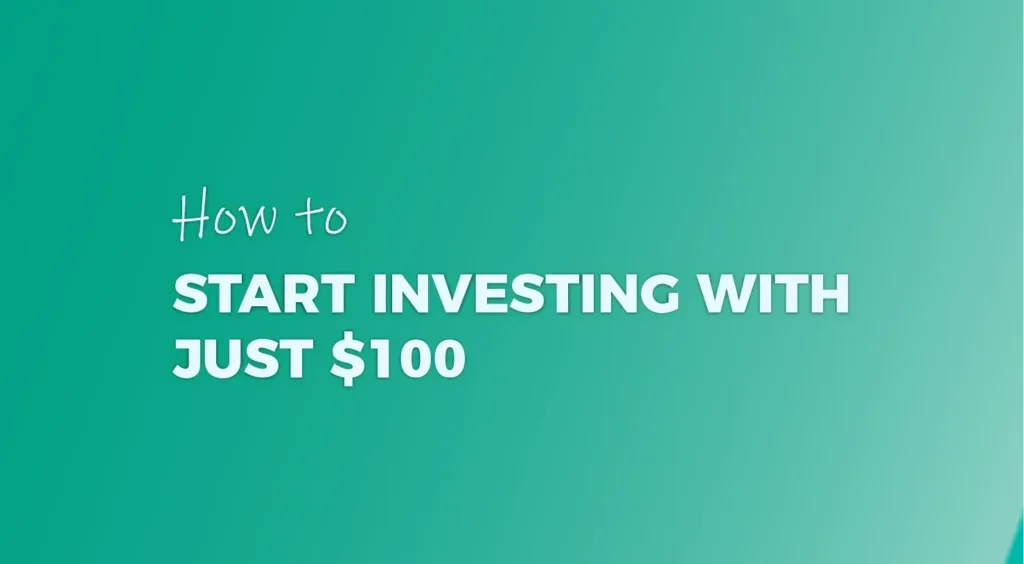Investing might seem like something reserved for those with thousands of dollars, but that’s no longer the case. Thanks to new technology and low-cost platforms, you can begin building wealth with as little as $100. Whether you’re a student, a young professional, or just getting your financial footing, this guide will walk you through how to start investing safely and smartly with limited funds.
💡 Why Start Investing Early?
Starting early—regardless of how much you invest—has a major advantage: compound interest. The earlier your money begins working for you, the more it can grow over time.
Example:
If you invest $100 today and earn an average of 8% annually, it could grow to over $215 in 10 years—without any additional contributions.
🔍 Step 1: Set a Financial Foundation
Before you invest, make sure you have:
- An emergency fund (3–6 months of expenses)
- No high-interest debt (like credit cards)
- A monthly budget that allocates money for investments
This ensures you’re not risking money you can’t afford to lose.
📱 Step 2: Choose a Beginner-Friendly Platform
There are many apps and platforms that allow you to invest small amounts with no minimums or commissions.
Top Choices:
- Robinhood: Commission-free trading for stocks and ETFs
- Acorns: Rounds up your purchases to invest spare change
- Stash: Helps you invest in fractional shares and ETFs
- Fidelity: Offers commission-free trades and zero-fee index funds
Choose one based on your comfort level and long-term goals.
🏦 Step 3: Start with ETFs or Index Funds
Exchange-Traded Funds (ETFs) and index funds are baskets of stocks that reduce risk by spreading your investment across many companies.
Benefits:
- Diversification
- Low fees
- Beginner-friendly
Popular ETFs for Beginners:
- VTI (Total U.S. Market)
- SPY (S&P 500)
- QQQ (Top 100 Nasdaq companies)
Even with $100, you can buy fractional shares on many platforms.
💰 Step 4: Automate Your Investments
Once you’ve chosen a fund or stock:
- Set up automatic deposits (even $10/week)
- Use reinvestment options to reinvest dividends
Over time, this habit leads to significant growth with little effort.
🧠 Step 5: Learn as You Grow
Knowledge is one of the best investments you can make. Use your early days of investing to build your financial IQ.
Resources:
- Investopedia: Definitions and guides
- Morningstar: Fund analysis
- The Motley Fool: Stock market news and tips
Also consider reading books like “The Intelligent Investor” by Benjamin Graham or “Rich Dad Poor Dad” by Robert Kiyosaki.
⚖️ Common Mistakes to Avoid
- Putting all your money in one stock
- Chasing trends or hype (e.g., meme stocks)
- Ignoring fees and expense ratios
- Checking your portfolio every day
- Selling in panic during downturns
Investing is a long-term game. Be patient, and don’t let emotions drive decisions.
🧩 Bonus Ideas for Your First $100 Investment
💎 Cryptocurrency (With Caution)
Use platforms like Coinbase or Binance to invest in small amounts of Bitcoin or Ethereum. Cryptos are volatile, so only invest what you’re willing to lose.
🏠 Real Estate Crowdfunding
Sites like Fundrise allow you to invest in real estate for as little as $10–$100. You earn from rent and appreciation.
📈 Robo-Advisors
Apps like Betterment or Wealthfront manage your money automatically, using algorithms to optimize your portfolio.
🧾 High-Yield Savings or CDs
Not technically an “investment,” but these options preserve capital while earning more than regular savings accounts.
💬 FAQs
Q1: Is it really worth investing just $100?
Absolutely. It’s not about the amount—it’s about forming the habit and learning the process early.
Q2: What if I lose my $100?
You should only invest money you can afford to lose, especially in stocks or crypto. Start with safer options like ETFs.
Q3: Should I invest before paying off debt?
Only if your debt interest rate is low (e.g., student loans at 3-4%). Pay off high-interest debt first.
Q4: Can I buy Amazon or Tesla stock with $100?
Yes, via fractional shares. Most modern platforms let you buy a portion of a share.
Q5: How often should I invest?
Ideally, monthly or biweekly—even small amounts. Consistency matters more than size.
🔗 External Links
🏁 Conclusion
You don’t need a fortune to get started in investing. With just $100, you can open the door to financial growth, confidence, and a better future. The key is to start, stay consistent, and never stop learning. Whether you’re putting money into ETFs, real estate crowdfunding, or even writing your first stock order, that first $100 can be the beginning of your wealth journey.
Start today—and let time and strategy do the rest.
🎁 Want a Surprise?
Click here to get redirected to a random post


